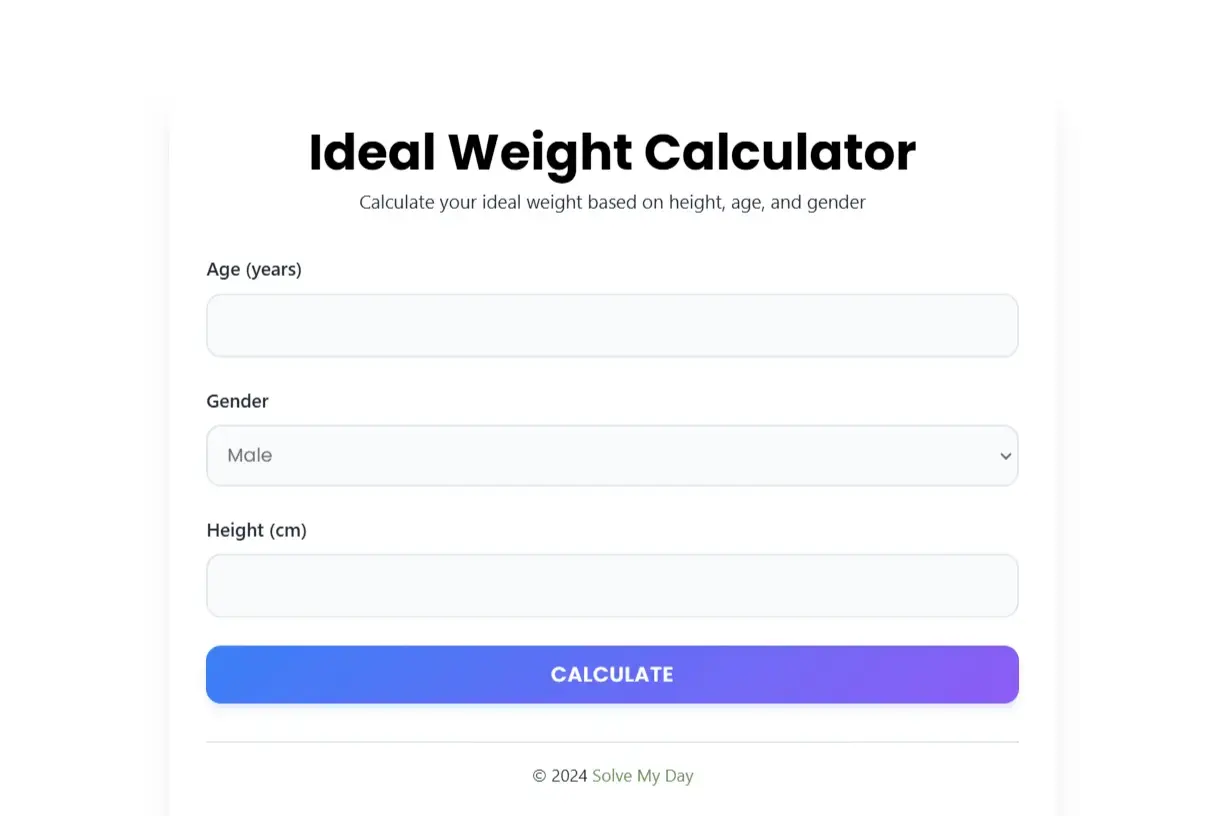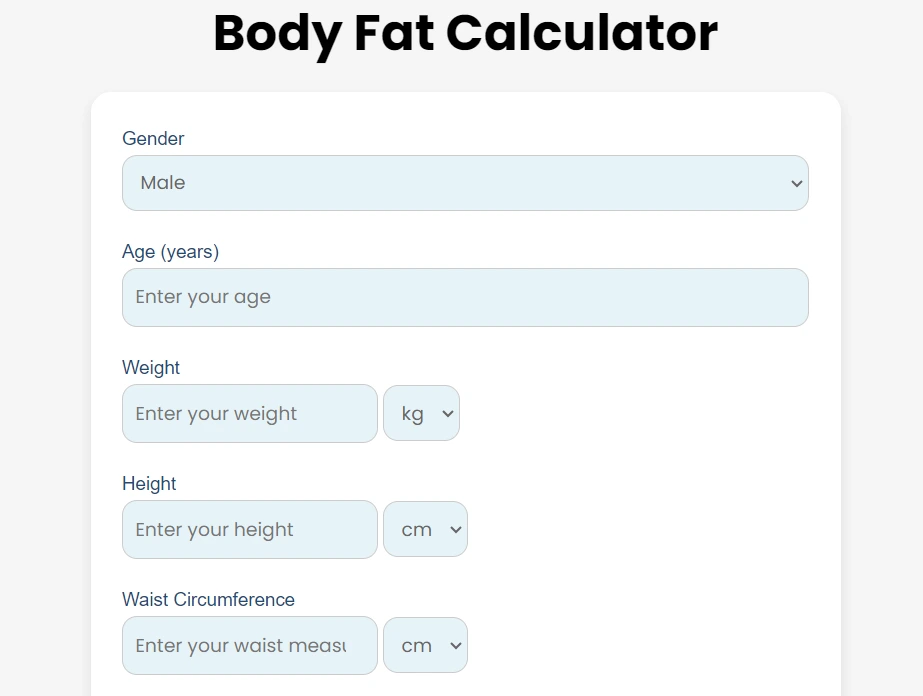Relative Fat Mass (RFM) Calculator
straightenHow to Measure
Follow these steps for accurate measurements:
- Height: Stand straight against a wall, heels together, eyes forward
- Waist Circumference: Measure at belly button level while breathing normally
infoTips for Accuracy
- Measure in the morning before eating
- Keep the measuring tape parallel to the floor
- Don’t pull the tape too tight
- Take multiple measurements and average them
calculateRFM Calculator
Relative Fat Mass (RFM): The Simple Way to Measure Body Fat
You’ve tried BMI. You’ve tracked your weight. But what if you’re missing the one measurement that matters most for your health?
Meet Relative Fat Mass (RFM) – a research-backed method to estimate body fat using just your height and waist size. No expensive scans. No confusing math. And unlike BMI, it actually accounts for dangerous belly fat.
Here’s how it works, why it’s better, and exactly what to do with your results.
Why BMI Fails You (And What Works Better)
BMI has a glaring flaw: it treats muscle and fat the same. A 200-pound athlete and a 200-pound sedentary person share the same BMI score. Worse? It ignores visceral fat—the dangerous type surrounding your organs, linked to heart disease and diabetes.
RFM fixes this by focusing on your waist-to-height ratio.
How to Calculate Relative Fat Mass in 3 Steps
Step 1: Measure Your Height
- Stand straight against a wall (barefoot).
- Place a book on your head, mark where it meets the wall.
- Use a tape measure from the floor to the mark.
Step 2: Measure Your Waist
- Find your natural waist (above hip bones, below ribs).
- Breathe out normally—don’t suck in.
- Keep the tape parallel to the floor.
Pro Tip: Measure at the same time daily (morning is best) for consistent tracking.
Step 3: Use the RFM Formula
- For Men:
64 – 20 × (Height ÷ Waist) - For Women:
76 – 20 × (Height ÷ Waist)
Example:
Maria, 165 cm tall with an 80 cm waist:
76 – 20 × (165/80) = 76 – 41.25 = 34.75%
Her RFM? 34.7% – a signal to focus on visceral fat reduction.
What Your RFM Score Actually Means
Plug your numbers into the Solve My Day RFM Calculator (above) to get:
- Your RFM Percentage
- Health Category:
- Essential Fat (Men: 3-6%, Women: 10-13%)
- Athlete (Men: 6-13%, Women: 14-20%)
- Fitness (Men: 14-17%, Women: 21-24%)
- Average (Men: 18-24%, Women: 25-31%)
- Obese (Men: >25%, Women: >32%)
- Custom Chart: See how you compare to ideal ranges.
5 Action Steps Based on Your RFM Results
If You’re in the Obese Range (>25% for Men, >32% for Women):
- Start Small: Reduce waist size by 5% first (e.g., 90 cm → 85.5 cm).
- Walk After Meals: Just 10 minutes lowers blood sugar spikes.
- Track Progress: Re-measure every 2 weeks.
If You’re in the Fitness/Athlete Range:
- Maintain Muscle: Strength train 2x/week.
- Check Hydration: Dehydration skews waist measurements.
For Everyone:
- Avoid processed sugars (linked to belly fat).
- Sleep 7-9 hours nightly (poor sleep increases hunger hormones).
Relative Fat Mass vs. Other Body Fat Tests
| Method | Accuracy | Time Required |
| RFM | High | 2 minutes |
| DEXA Scan | Very High | 20 minutes |
| Calipers | Moderate | 10 minutes |
| Bioimpedance | Low | 5 minutes |
Why RFM Wins:
- No special equipment or training needed.
- Focuses on visceral fat – the real health threat.
- Validated by peer-reviewed studies.
3 Common RFM Mistakes (And How to Avoid Them)
- Measuring After Eating: Bloating adds inches. Always measure fasted.
- Rounding Numbers: A 0.5 cm error changes results. Be precise.
- Ignoring Gender Differences: Women naturally carry more essential fat.
FAQs: Your Top RFM Questions Answered
Q: Can RFM diagnose obesity?
A: No—it’s a screening tool. Always consult a doctor for diagnoses.
Q: Is RFM accurate for athletes?
A: Yes! It accounts for muscle mass better than BMI.
Q: How often should I check RFM?
A: Monthly. Daily fluctuations are normal.
Try It Now: Get Your Free RFM Score
Use the calculator above. Takes 30 seconds. No email required.
Remember: Your RFM is a starting point—not a final verdict. Small changes create big results.
Disclaimer:
This tool estimates body fat percentage using the Orison Research RFM formula. It is not a substitute for professional medical advice, diagnosis, or treatment. Always consult a healthcare provider before making health decisions.




